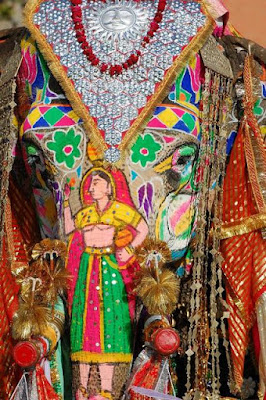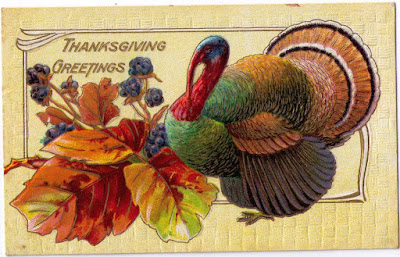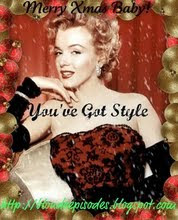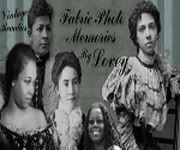When looking at black and white photographs of
women considered glamorous in the 1920s and early 20th century, one
often finds it difficult to relate to their look. Their make-up is
strange and melodramatic, their hairstyles usually unflattering and even
macabre; almost as if there was a preference for a rather un-natural
beauty. But then when we come across the Alfred Cheney Johnston portraits of
the Ziegfeld Follies girls, we discover a refreshing female
“prettiness” that this era always seems to lack in its historical
imagery. They are women that could have rivaled the modern-day rat pack
of Victoria Secret supermodels; a carefully curated troupe of natural
beauties dressed to enhance their Botticelli-esque figures, with sex
appeal, free-flowing hair; soft and seriously attractive faces that can
truly be believed as having broken many a man’s heart…
The Ziegfeld Follies were a series of elaborate Broadway productions
known for featuring the most beautiful chorus girls in the world.
Florenz “Flo” Ziegfeld was the legendary showbiz man behind it all and
could be considered a sort of early model and talent scout
extraordinaire.
Son of a German immigrant and nightclub-owner, Flo went to Europe at the
dawn of the 20th century to scout for new talent where he met his first
beauty, a café singer with a fantastic hourglass figure and a sexy
French accent named Anna Held.
Mlle. Anna Held-Ziegfeld
He was enchanted by her and they were
soon married. He wanted to bring her back to America and make her a star
as her manager, but Anna encouraged him to think bigger. The infamous
Parisian cabaret, Folies-Bergere, was dazzling audiences in Europe and
she suggested Flo create the American equivalent. “Your American girls
are so beautiful, the most beautiful girls in the world,” she told him.
“If you dress them up chic, you’d have a better show than the
Folies-Bergere.”
And so he did. Flo began searching for his beauties in small towns and
big cities alike, on the street or backstage at local amateur shows. He
was looking for a particular sort of beauty– not high-fashion or
particularly elegant, but a beauty with sex appeal.
He called himself the “glorifier of the American girl” and auditioned
girls for his chorus line by first watching them walk in high
heels. “Before I see their faces, I want to see how they walk,” he once
said, sounding not too unlike a scout for a Victoria’s Secret Show
audition. “There’s more sex in a walk than in a face or even in a
figure.”The Follies of 1907 opened at the spectacular rooftop theatre, Jardin de Paris, atop the New York Theatre in Broadway.
Anna lead a chorus line of 50 beauties and the show was an instant smash
hit. Ziegfeld’s girls brought about a new standard of beauty. A New
York Times review of the “Ziegfeld Follies of 1910” from June 1910
wrote:
“They caught folly on the fly at the New York Theatre last
night, incidentally creating a little folly of their own, as in
generally the way in the annual Ziegfeld Revue… The swings with their human freight flew to and fro over the auditorium and the heads of star-gazers ‘The Follies of 1910’ is a long show, and a good one, with plenty of variety.”
The Follies' rooftop theatre on Broadway
The Follies was every day and was constantly updated to keep them fresh
for returning audiences. Ziegfeld even reportedly provided little wooden
hammers for every member of the audience so they wouldn’t hurt their
hands from clapping so much.
He was also a master of publicity stunts and used this talent to launch
the careers of his chorus girls, many of which went onto become film
stars and Academy Award winners. He once told the press that his leading
lady Anna took a milk bath every day and sent the milk back to the
dairy if it was sour. The dairy actually sued him for libel but he had
already won the public’s attention. Anna became one of the first big
stars of the era thanks to the priceless publicity her husband
generated. The showman was a well-known perfectionist in the business
and paid attention to every last detail, but he was also flamboyant, a
big spender and a notorious womaniser.
Author Lee Davis in his book, “Scandals and Follies,” wrote that
Ziegfeld had a “need for all his adult life to sleep with the best of
the beauties he hired.”Anna eventually divorced him after Flo had fallen insanely in love with Lillian Lorraine, another of his scouted beauties, and set her up in an apartment in the opulent Ansonia residential hotel, two floors directly above his wife. He spent the next few years tirelessly promoting Lillian as one of the most popular attractions of his Follies, but despite his efforts, she never married him. Instead he later married another beautiful actress Billie Burke in 1914 (pictured below).
If Ziegfeld’s beauties weren’t being romanced by Flo himself, they
gained many young male admirers and became objects of adoration. Dorothy
Knapp (pictured below), who appeared in the Follies of 1924 and
1925 was billed “The Most Beautiful Girl in The World” by Earl Carroll
and placed as a runner-up in the “Miss America” pageant. In 1930 she
became the first woman to sign a contract with NBC
When one of the most well-liked chorus girls Myrna Darby (pictured
above), fell ill, her hospital bills were paid by an anonymous donor,
later found to be a New York nightclub owner, Larry Fay, who barely knew
her, had only met her once, but described her as the sweetest and
prettiest girl he’d ever met. Darby died at the tender age of 21,
allegedly from a broken heart after her engagement to a fur baron had
been called off. Another theory implied a sunstroke-induced heart
infection, having received a severe sunburn while touring Europe.
Ziegfeld and the Follies girls attended the funeral and “the whole
chorus wept until all makeup was washed away”.
All of the Follies girls were immortalised in the portraits of Alfred
Cheney Johnston, a New York City-based photographer who became
Ziegfeld’s contracted photographer in 1917, and was affiliated with the
Follies for the next fifteen years.
After Johnston’s death in 1971, a huge treasure trove of photos of
Ziegfeld’s showgirls was found stored at the farm near Oxford,
Connecticut, where he’d lived since 1940.
Most of the images of women, mostly unidentified were daring,
un-retouched full-frontal and semi-nude images that would certainly have
had no public-publication possibilities in the 1920s-1930s. It’s
speculated that these were either simply his own personal work, or done
at the behest of Flo Ziegfeld for that showman’s personal enjoyment.
Ziegfeld went on to produce some very successful musical comedies and
nightclub shows, breaking barriers in show business by introducing the
first black man to co-star on Broadway, multiracial casts and stories
like Showboat that dealt with taboo subjects such as racism and
broken marriages. He made a lot of money but lost his entire fortune in
the stock market crash of 1929. Then the depression dried up his
audiences who could no longer afford to see Broadway shows. Ziegfeld’s
shows had high production costs, requiring large audiences to make money.

The legendary Ziegfeld Follies eventually folded at the hands of the
Great Depression in 1931. Florenz died a year later from a recurring
lung infection. He reportedly spent the last few months of his life
attempting to suppress his fear of death by hosting an endless stream of
gin-soaked orgies. After his death, his wife Billie Burke authorized
use of his name for renewals of Ziegfeld Follies in 1934 and 1936, and
the name was later used by other promoters, none of which ever managed
to recapture the magic of the original show. Burke had been left with
her husband’s substantial debts and went to Hollywood in search of
acting work to settle them.
When MGM made The Great Ziegfeld in 1936, a soft biopic of
Florenz Ziegfeld that won the Academy Award for Best Picture, another
actress Myrna Loy was cast to play Burke. This infuriated Ziegfeld’s
former wife who was actually under contract with MGM at the time and
could have played herself. She was considered too old to cast by the
studio. In her mid fifties, she took the role of the good witch Glinda
in the 1939 film Wizard of Oz starring Judy Garland.
Billie Burke-Ziegfeld as she appeared as Glinda in the classic film "The Wizard of Oz"
In 1941,
MGM released a second film about the Follies called Ziegfeld Girl,
starring Lana Turner, Judy Garland and Hedy Lamarr. According to modern
sources, Lana Turner’s character was modeled after Ziegfeld Girl and
Flo’s unrequited love, Lillian Lorraine who had a drunken fall into the
orchestra pit during an extravagant number.Surely the Victoria’s Secret girls won’t have a story like this to tell in a hundred years.
Now, go make something beautiful!
´¨)
¸.•´¸.•*´¨) ¸.•*´¨)
(¸.•´ (¸.•´? Tristan
¸.•´¸.•*´¨) ¸.•*´¨)
(¸.•´ (¸.•´? Tristan















































































































































